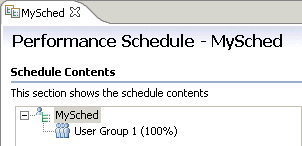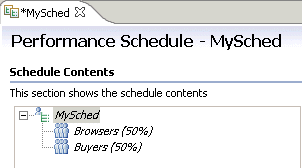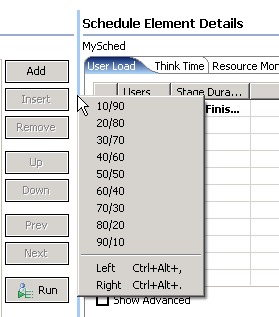Schedule overview
A schedule is the "engine" that runs a test. However, schedules are much more than simple vehicles for running tests. You can design or emulate the real-life workload by creating various groups and dividing the load across different remote agents that generate load on the application under test. A schedule can be as simple as one virtual user or one iteration running one test, or as complicated as hundreds of virtual users or iteration rates in different groups, each running different tests at different times.
You can create a VU Schedule or a Rate Schedule. The VU Schedule is used to add virtual users to generate the load on the application under test. The Rate Schedule is used to ascertain the rate at which a task can be achieved in a specific time frame.
You can use a schedule to control tests in the following ways:
- Group tests under groups, to emulate the actions of different types of users or rates.
- Set the order in which tests run: sequentially, randomly, or in a weighted order.
- Set the number of times that each test runs.
- Run tests at a certain rate
- Run tests for a certain time, and increase or decrease virtual users or rate during the run
 When you add items to a schedule, they appear in italic type, as shown below. The italic
type changes to regular type after you save the schedule.
When you add items to a schedule, they appear in italic type, as shown below. The italic
type changes to regular type after you save the schedule.
- Click Ctrl+Alt+> or Ctrl+Alt+< to enlarge or reduce the window.
- Hover at the left side of the Schedule Element Details area. When you
see a vertical blue line, right click the line and select a size ratio from
the menu.
